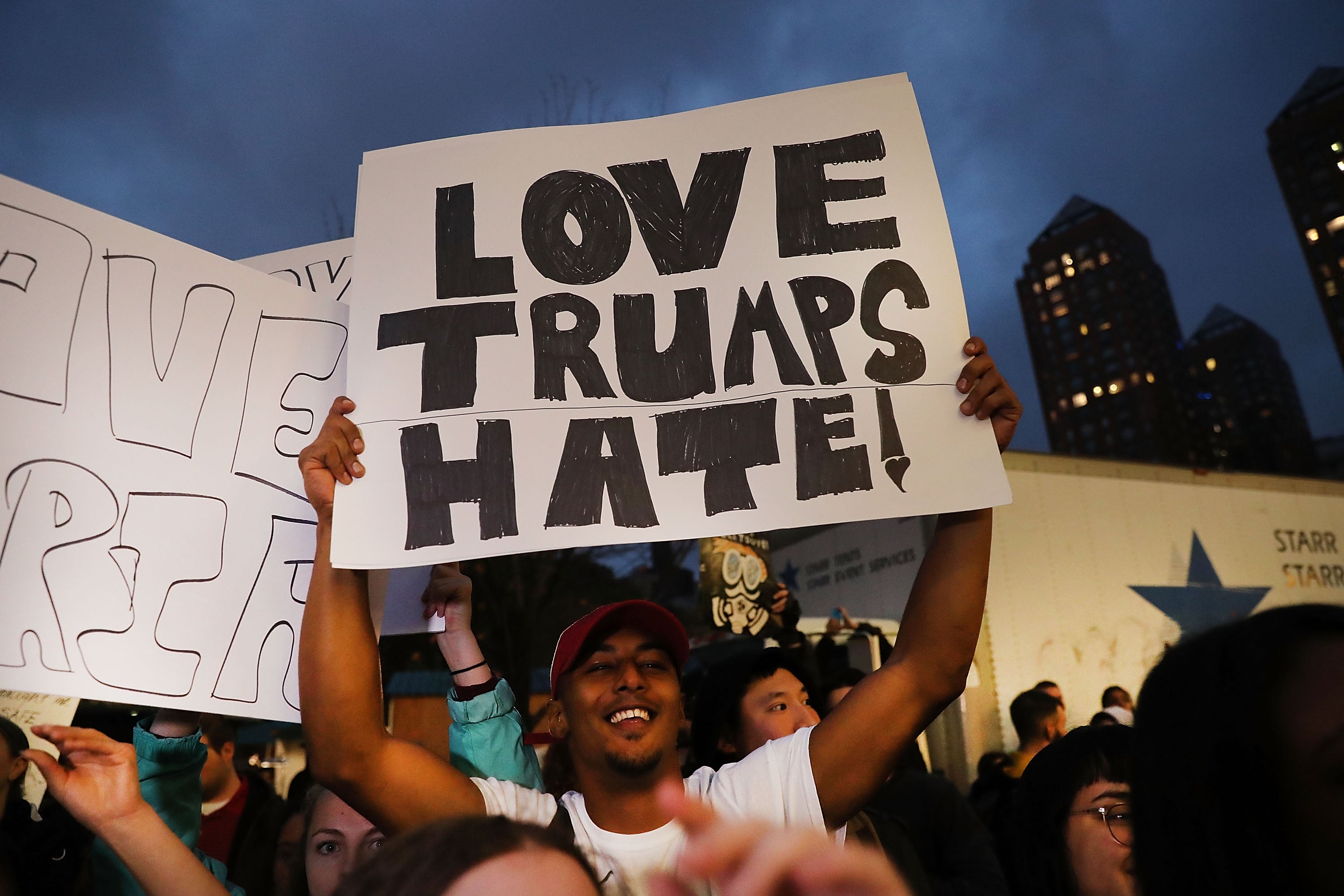
Much will be said about the 2016 election: two unpopular candidates somehow resulted in one of the biggest upsets in recent memory; FBI Director James Comey impacted the election with an eleventh hour dust-up on Clinton emails; voters exhibited a very real rejection of Washington, D.C.
All these are true, and they all brought us here. But these will obfuscate the central point. This is racially driven. White racial anxiety is real, it’s divisive and it has given permission to a nation to exclude people of color in ways that many may not intend.
Comey’s reopening the question of Clinton emails played a role. We were already deeply polarized along race lines before Comey’s letter. FiveThirtyEight, Nate Silver’s pre-eminent polling website, had Clinton with an 81 percent chance of winning before the Comey letter, which then dropped to 65 percent after the letter’s release. This seems like a dramatic shift, but an ABC News Exit Poll reported that 75 percent of respondents decided who they would vote for more than a month ago. So, in actuality, the letter may not have made much of a difference.
Many of us believed that White women would vote for Clinton, or at the very least, not vote for an unabashed misogynist. Wrong. FiveThirtyEight reported, “College-educated white women voted for Clinton 51 percent to 45 per cent, but non-college-educated white women voted for Trump 62 per cent to 34 per cent.” This isn’t just about class. President Obama won female voters in the 2012 election by 12 points, 56 percent to Mitt Romney’s 44 percent. Class plays a role here, but White economic insecurity in the face of a browning nation is part of White racial anxiety.
Subscribe to our daily newsletter for the latest in hair, beauty, style and celebrity news.
One study from a Hamilton College political scientist found that resentment towards Black Americans, anti-Muslim stereotyping and beliefs President Barack Obama was a Muslim, predicted positive views of Donald Trump. The Washington Post had a survey with ABC News that also showed those who believed White Americans’ troubles were the result of preferences for Blacks and Hispanics, helped explain support for Donald Trump. In other words, concerns about White status played a larger role in garnering support for Trump than economic issues.
White racial anxiety is defined by feeling tension and unease about racial differences. Social science is replete with research suggesting changing demographics coupled with economic insecurity is a recipe for disastrous politics that ignore our shared interests in social cohesion and prosperity.
The Public Religion Research Institute found that when it asked respondents whether “discrimination against whites is a significant problem” 43 percent of Americans—including 60 percent of working-class Whites—said it had become as big a problem as discrimination against Blacks and other minorities. And remember, both explicit and implicit anti-Black attitudes increased between 2008 and 2012, including among Democrats and Independents, although Republicans had the highest percentage of anti-Black attitudes.
We have seen this backlash repeatedly: in the tremendous increase in hurdles for people of color to lawfully vote across the states, in growing racial segregation among public schools, and in the growing competition for affordable housing. We must acknowledge this, but we must also recognize that racial anxiety doesn’t just persist between Black and White Americans, it affects Latinos and Muslims and all other groups of color as well.
This is important. And it’s up to us to solve it. The growing divide among the races is only going to create more discord in American politics and in everyday life. Democrats and fair-minded Republicans need to come together and find a path to embrace opportunity building in cities and rural communities that look squarely at race.
The demographics of this country will continue to diversify. That is too well underway to change. But demographics isn’t destiny and White America must be saved from itself now. Donald Trump is not going to get us there. In fact, he will stoke anxiety and provide a platform for White supremacists, as we saw at his rallies. So this can only happen if we now actively build multi-racial relationships and coalitions. It requires that we work in cities to do that – from police and community relations to school integration to investments in communities of color to participating fully in the civic life of cities. Demographic diversity is not pluralistic destiny. And hate and distrust can be thwarted. It’s time.
Maya Wiley is the Senior Vice President for Social Justice at the New School and the Henry Cohen Professor of Urban Policy and Management at the New School’s Milano School of International Affairs, Management & Urban Policy, as well as the Chair of the New York City Civilian Complaint Review Board (CCRB) – the independent oversight agency for the City’s Police Department.